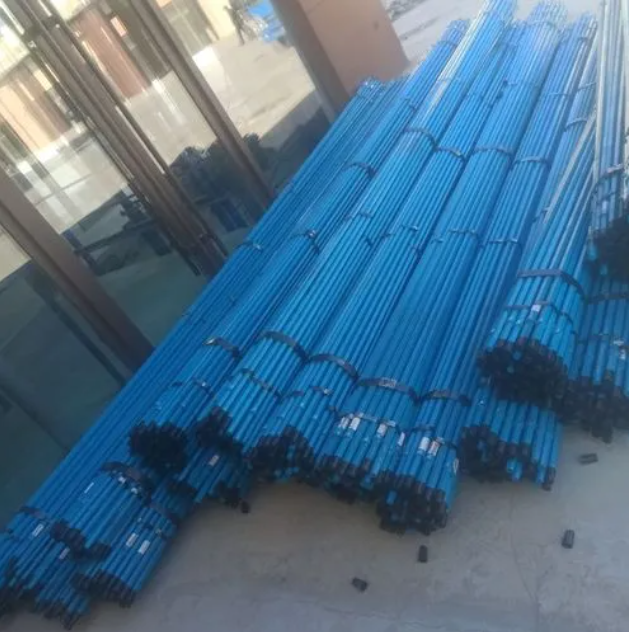How to choose the material of the drill pipe
The terrible form of failure of the drill pipe is the fracture of the drill pipe. Once the drill pipe breaks during the directional and directional drilling and pipe laying process, it will have a serious impact on the project, not only an economic loss, but also a construction period, loss of credibility, and disastrous consequences. Therefore, as a construction company, we must learn how to select and use drill rods correctly; as a drill rod manufacturer, we must know the special requirements for drill rods in trenchless engineering, and produce high strength, high elasticity and high reliability. Drill pipe.
Drill pipe manufacturers explain the choice of materials: In order to adapt to the force analysis of trenchless oriented and directional drill pipes, the drill pipe body should have higher tensile strength, better bending performance and better impact toughness. The rod material should be a medium-carbon alloy structural seamless steel pipe. The alloy elements should contain Cr, Mo and other elements to improve the tensile strength and impact toughness of the material, and Mn, Si and other elements to improve the material's elasticity (ie bending resistance) . Sometimes it also contains trace amounts of B, V and other elements to improve the hardenability of the material. The commonly used rod materials are: 36Mn2V, 35CrMo, 42MnMo7, 35CrMnSi, 45MnMoB.

The wall thickness uniformity and rolling defects of the seamless steel pipe used for the rod body are also important factors that affect the quality of the rock drill pipe(rock drilling tools). The steel pipes rolled by small steel mills have a serious uniformity in wall thickness. When the drill pipe is subjected to a large torsion force, it is easy to longitudinally crack at the thinner wall thickness. Some steel pipes have defects such as heavy skin and pores, and the drill pipe is easy to break or leak from here.
The force of the drill pipe joint is complex, and the joint material has high comprehensive mechanical properties. The drill pipe joints are mostly made of 35CrMo or 42CrMo bar stock, but the forged joint material can greatly improve its comprehensive mechanical properties.
Processing technology selection: At present, the domestic non-excavation drill pipes mainly include integral forged drill pipes (referred to as integral drill pipes), upsetting + friction welding drill pipes (referred to as upsetting welding drill pipes) and simple friction welding drill pipes (referred to as Friction welding drill pipe).
Treatment of upsetting and thickening section: Whether it is an integral drill pipe or an upset welding drill pipe, the treatment of the transition section between the upset part and the unupset part is the main factor affecting the upsetting quality. The transition section should have sufficient length, and the wall thickness transition should be uniform, smooth, and without wrinkles. After the rod body is upset, the overall quenching and tempering treatment is carried out to remove the internal stress of the transition section and improve its comprehensive mechanical properties.




